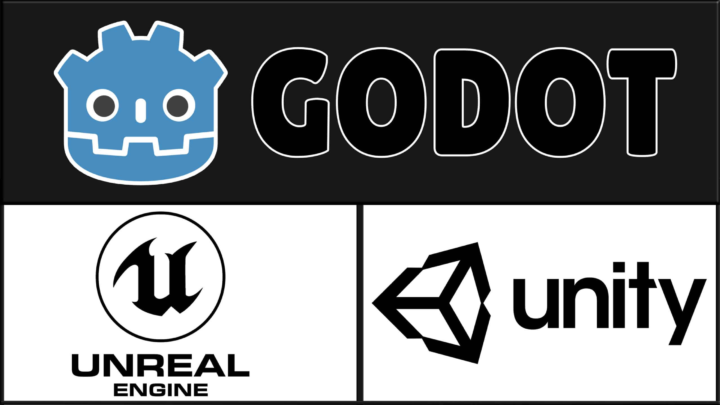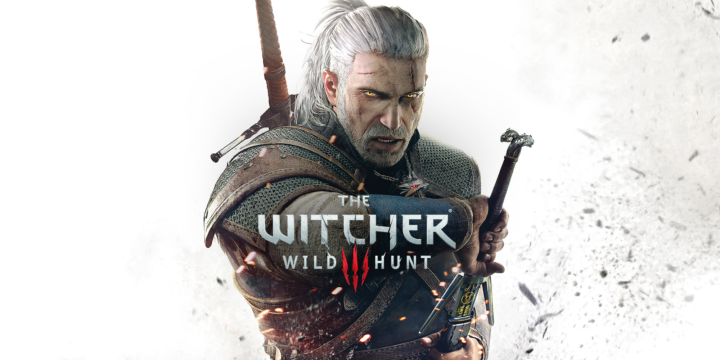The Magic of Pre-Production in Video Games’ Development
Ah, video games. They’ve come a long way from the pixelated pastures of Pong to the immersive worlds of The Witcher and Red Dead Redemption. But while the final product gets all the love and adoration, the real hero often goes unnoticed. No, it’s not the caffeine-fueled programmers or the sleep-deprived designers. It’s pre-production—the crucial first step in video game development that sets the stage for everything to come. Buckle up, dear reader, as we begin to understand why Pre-Production in Video Games is the secret sauce.
The Consequences of Skipping Pre-Production
Let’s paint a picture of the worst-case scenario. You’re a developer who’s just spent two years on a game. The deadline is looming, but you’re confident because the game looks beautiful, and the mechanics are smooth. Then, during final testing, you realize the story makes no sense, the main character is bland, and the levels don’t connect well. Panic sets in. There’s no time to overhaul the game, and it launches to scathing reviews and poor sales.
This nightmare is all too common in the gaming industry. High-profile flops like Anthem and Cyberpunk 2077 suffered from poor planning and rushed production. The fallout? Disappointed fans, tarnished reputations, and financial losses.

Problem: Diving in Without a Plan is a Recipe for Disaster
Imagine trying to build a house without a blueprint. You start laying bricks, but halfway through, you realize there’s no room for a bathroom. Or worse, you forgot the front door. Now you have a hodgepodge of walls, no plumbing, and an expensive mess.
Video game development is no different. Jumping straight into production without a solid plan can lead to chaos. Developers might spend months creating a character that doesn’t fit the story or designing levels that don’t work with the gameplay mechanics. The result? Missed deadlines, ballooning budgets, and a game that feels more like Frankenstein’s monster than a masterpiece.
Solution: The Power of Pre-Production in Video Games
But here’s the good news: pre-production can save the day! Think of it as the game’s foundation. It’s where the magic happens and where crucial decisions are made. Let’s break down the key components of pre-production and how they pave the way for a successful game:
1. Concept Development: The Big Idea
Every epic game starts with a spark – a captivating story, a groundbreaking mechanic, or a visually stunning world. Brainstorming sessions bring ideas to the table, sketches give your vision form, and the core of your game takes shape.
Here are some prompts to get your creative juices flowing:
- What makes your game unique? What emotional journey will players take?
- Is there a specific genre you’re passionate about? Can you introduce a fresh twist?
- Look at existing games for inspiration, but don’t be afraid to break the mould!
Resources for Concept Development:
- Book: “The Art of Game Design: A Book of Lenses” by Jesse Schell (I personally love this one).
- Website: Game Developer (formerly Gamasutra) – A treasure trove of articles and tutorials on game development.
2. Storyboarding: Mapping the Journey
Think of storyboarding as your game’s visual script. It’s where you map out the plot, character arcs, and pivotal moments. This helps developers understand the narrative flow and how players will experience the story. The roadmap guides the entire development process, ensuring a cohesive and engaging experience.
Storyboarding doesn’t require fancy software. Even simple sketches or flowcharts can be effective. The key is to visualize the player’s journey and identify potential pacing issues or plot holes.
Resources for Storyboarding:
- Article: “Storyboarding for Games” by GameDeveloper
- Software: Many storyboarding tools, both free and paid, are available. A popular option is Storyboard That.
3. Prototyping: Testing the Waters
This is where the magic of “seeing is believing” comes in. Prototypes are essentially stripped-down versions of your game mechanics, allowing developers to test if they’re fun and functional. Imagine catching a gameplay flaw early on – much easier (and cheaper!) to fix at this stage than later in production. Prototyping ensures only the most engaging mechanics make it to the final product.
There are various prototyping approaches, from basic pen-and-paper mockups to more sophisticated digital prototypes built in game engines like Unity or Unreal Engine.
Resources for Prototyping:
- Article: “Game Prototyping: How to Prototype Your Game Idea” (upcoming article)
- Software: Unity, Unreal Engine – These powerful engines offer features specifically for game prototyping.

4. Technical Planning: Building the Framework
Here’s where we delve into the technical aspects – the nuts and bolts that make your game tick. What engine will power your creation? Are there hardware limitations to consider? How will multiplayer functionality work? Answering these questions upfront avoids nasty surprises down the line and guarantees the game is technically sound.
Technical planning requires a close collaboration between designers and programmers. Here are some key aspects to consider:
- Game Engine Selection: Different engines have strengths and weaknesses. Unity is known for its user-friendliness and versatility, while Unreal Engine excels in creating high-fidelity graphics. Godot is open-source with a strong community. Researching available engines and considering your project’s specific needs is crucial.
- Hardware Limitations: Identify the target platforms (PC, consoles, mobile) and understand their technical specifications. This will ensure that your game runs smoothly on the intended hardware.
- Multiplayer Functionality: If your game involves multiplayer, consider factors like network infrastructure, online matchmaking, and server capacity. Planning this early on avoids technical hurdles later in development.
Resources for Technical Planning:
- Article: “Choosing the Right Game Engine” (another upcoming article)
- Websites: Unity Learn, Unreal Engine Documentation, Godot Engine Documentation
5. Budgeting and Scheduling: Keeping Things on Track
Let’s face it: development costs money. Pre-production is where a detailed budget is created, ensuring your project stays financially afloat. A realistic timeline with clear milestones and deadlines is also established. This keeps development on track, manages expectations, and avoids costly delays.
Budgeting:
- Consider all development costs, including personnel (programmers, artists, designers), software licenses, assets, and marketing.
- Buffer in a contingency fund for unforeseen expenses.
Scheduling:
- Break down development into manageable milestones, like completing the core gameplay loop or implementing the first level.
- Set realistic deadlines for each milestone, considering team size and workload.
- Regularly track progress and adjust the schedule as needed.
Resources for Budgeting and Scheduling:
- Article: “Game Project Management: Budgeting and Scheduling” by GameDeveloper
- Software: Project management tools like Trello or Asana can help you visualize your workflow and track progress
Injecting Some Fun: Pre-Production Stories and Tips

The Legend of Zelda: Breath of the Wild
One of the most beloved games of all time, The Legend of Zelda: Breath of the Wild, owes much of its success to meticulous pre-production. The team spent months experimenting with different gameplay mechanics, story ideas, and visual styles before settling on the final concept. They even created a 2D prototype to test the game’s physics and puzzles. This careful planning resulted in a game that felt innovative and polished.
Tip: Embrace the Chaos of Brainstorming
Brainstorming can be messy, and that’s okay! Encourage wild ideas and think outside the box. The goal is to generate as many ideas as possible. You can always refine and filter them later. Remember, no idea is too crazy during this stage. Who knows, your next wild idea could be the next big thing in gaming.
Source: Polygon: The Making of Breath of the Wild

The Witcher 3: Wild Hunt
The Witcher 3: Wild Hunt is another masterpiece that benefited from thorough pre-production. The team at CD Projekt Red spent a significant amount of time developing the game’s story and characters. They also created a detailed world map and lore to ensure the game felt rich and immersive. This level of detail and planning paid off, earning the game numerous awards and a dedicated fanbase.
Tip: Test, Test, and Test Again
Prototyping is your friend. Don’t be afraid to create multiple prototypes to test different aspects of the game. Get feedback from other team members and potential players. The more you test, the more refined your final product will be. Prototyping helps you identify what works and what doesn’t before you invest significant time and resources.
Source: IGN: Inside The Witcher 3’s Development
Wrapping Up: The Unsung Hero Deserves Some Love
Pre-production in video games might seem daunting, especially for indie developers or small studios. But remember, even a little planning can go a long way. Start with a clear concept and build from there. Use storyboarding to map out your game’s narrative and gameplay. Create simple prototypes to test your ideas. And don’t forget to plan your budget and timeline.
Think of pre-production as an investment in your game’s success. The more effort you put in at this stage, the smoother the rest of the development process will be. Plus, you’ll save yourself a lot of headaches down the road.
In conclusion, pre-production is the unsung hero of video game development. It’s the stage where ideas are born, tested, and refined. It’s where potential problems are identified and solved before they become costly mistakes. Without pre-production in video games, even the most brilliant ideas can fall flat.
So, the next time you’re playing your favourite game, take a moment to appreciate the planning and effort that went into creating it. And if you’re a developer, embrace pre-production with open arms. Your future self (and your players) will thank you.
Happy developing!
